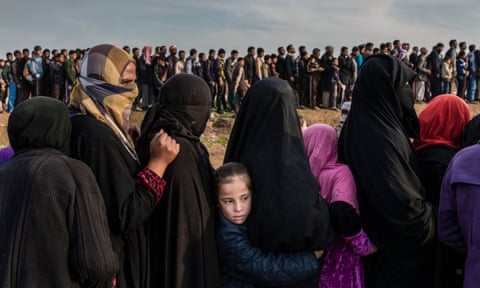The winner of the Prix Pictet will be announced on 13 November 2019, with the opening of an exhibition of works by the 12 shortlisted photographers at the Victoria and Albert Museum in London. On an 18-month cycle, the award focuses on a theme that promotes discussion and debate on issues of sustainability, awarding 100,000 Swiss francs (£80,700) to the work that speaks most powerfully to the theme of the award.
The theme for this cycle is Hope, which offers a wide range of creative possibilities and a strong set of connections to the overriding theme of sustainability: hope in the face of adversity, recycling, reforestation, rewilding, science – with a look at advances in medicine and technological solutions for global environmental problems – and the reduction of poverty levels.
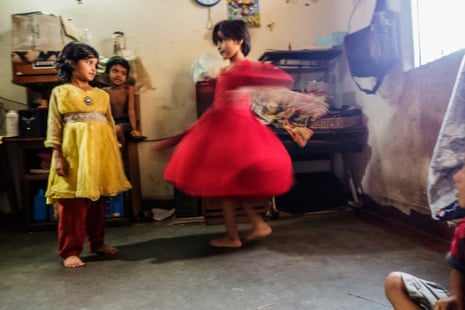
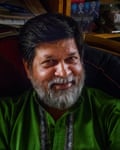
Shahidul Alam, born in 1955 in Bangladesh, based in Dhaka
Series: Still She Smiles, 2014
“Gang raped numerous times as a child, forced into pickpocketing, caned until unconscious, sold to a madame, Hajera Begum’s life has little that would give cause to smile. Yet she smiles. She cries too. Not because of the gang rapes, or the beating, or the many years she lived in the streets as a ragpicker, but when she remembers that a man who worked at an NGO refused to work in her team because she was a sex worker.”

Hajera arranging supplies for her orphanage on the phone while removing lice from the hair of one of the children.
“When I first met Hajera in 1996, she was a sex worker in Dhaka. We became friends, and she and her friends would often visit us in our flat, which would be considered an unacceptable act in most Bangladeshi homes.
She said: ‘You hugged me today when you saw me in the street, just like the old times. That’s something men will never do. They will have sex with me, grope me in the dark, rape me if they get the chance, but they will never hug me, as a sister, as a friend. That is what I want for my children. That they will grow up with dignity, in a world where they will be loved.’”
The photographer, writer, curator and activist Shahidul Alam studied in London before returning to his hometown, Dhaka, in 1984, where he documented the democratic struggle to remove General Hussain Muhammad Ershad, who was in power from 1983 to 1990.
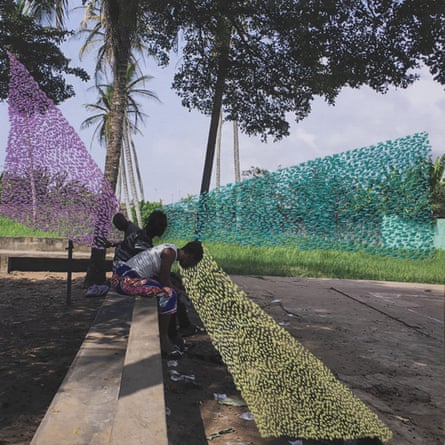
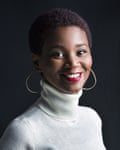
Joana Choumali, born in 1974 in Ivory Coast, based in Abidjan
Series: Ça va aller, 2016-2019
“These pictures were taken three weeks after the terrorist attacks in Grand Bassam [Ivory Coast] on 13 March 2016. After the attacks, the atmosphere of this little town changed. A a kind of melancholy invaded the town. I decided to wander the silent empty streets and I chose to leave my camera behind and shoot with my iPhone instead. I did not want to intrude on people’s intimacy and disrupt their mourning. In that moment, I did not feel like a photographer, detached by the place, instead I felt part of the wounded inhabitants.”

“In Ivory Coast, people do not discuss their psychological issues or feelings. A post-traumatic state is often considered a weakness or a mental disease. People hardly talk about their feelings, and each conversation is quickly shortened by a resigned ‘ça va aller’. This work is a way to address the way Ivorian people deal with trauma and mental health.
Joana Choumali is visual artist and photographer based in Abidjan, in Ivory Coast. She works mainly on conceptual portraits, mixed media and documentary photography.


Margaret Courtney-Clarke, born in 1949 in Namibia, based in Swakopmund
Series: Cry Sadness into the Coming Rain, 2014-2018
This series opens a new phase in Courtney-Clarke’s photographic work, documenting the artist’s return to Namibia and her engagement with its people and landscape in crisis.
“Namibia is steeped in history dating from the earliest inhabitants – Khoi, Bushmen, Herero, Namaqua, Damara – to German occupation, to the South Africans and apartheid, and now to ‘liberation’ and statehood – a nation of diverse peoples and cultures in a vast land of seeming nothingness and unparalleled light. I seek out the traces of their passing on the land.”

Life is Them. Emsi Tjambiru and Beverly Tjivinde dance on the road near their craft stall to flag down tourist buses, 2017.
“Cry Sadness into the Coming Rain is a record of this social process, which has always hinged on the fragility of hope. The existential world of the people I photograph is located in an unforgiving environment where life is precarious: little or no rain, scarce water and food, people abandoned by their government and forced to migrate to flee the emptiness ... Their only anchor is the expectation that life will persist against these odds.”
After studying art and photography in South Africa, Margaret Courtney-Clarke spent the next four decades working as a photographer in Italy, the US and across Africa.

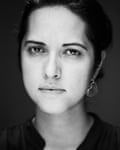
Rena Effendi, born in 1977 in Baku, Azerbaijan, based in Istanbul, Turkey
Series: Transylvania: Built on Grass, 2012
“For centuries, the small villages in Transylvania have preserved their hay meadows, raised cattle and operated self-sustainable farms. The agrarian fairytale extinct in western Europe still exists here, in bucolic scenes where young boys learn to cut and rake hay by hand, where all village women know how to weave and all men can build a house from scratch. In this old world, defined by traditional belief systems and respect for the environment, one does not trample a meadow of high grass before mowing it, the cows and horses find their way home along the muddy village tracks and the rivers’ water is busy with the milling, washing and alcohol making.”

The Borcas relaxing after a working day. Gheorghe and Anuța Borca were married in July 1995, in the middle of the grass-cutting season, therefore the honeymoon had to be shortened.
“Having survived the collectivisation of Ceausescu’s communist regime, this fragile rural environment now faces the modern threat of industrialisation and globalisation as a result of Romania’s 2007 entry into the European Union. This world is on the brink of extinction, as local small-scale farmers cannot compete with the European imports and industrialised agricultural production, and as youngsters leave the countryside in search for work in the cities of western Europe.”
Born in Azerbaijan, Rena Effendi lives and works in Istanbul, Turkey. Educated as a linguist, Effendi’s early work focused on the oil industry’s effects on people’s lives in her region.


Lucas Foglia, born in 1983 in the US, based in San Francisco
Series: Human Nature, 2006-2019
“Conservationists often disagree about how humankind should best move forward from the damage it has already done. Traditionalists argue we should put a boundary around wild spaces to preserve them, but there is no way to contain the effects of people. More radical conservationists propose moving all people to green cities, supplied with renewable energy and sustainable agriculture, to allow the countryside to re-wild itself.”

Kate in an EEG Study of Cognition in the Wild, Utah 2015.
“Responding to this debate, I befriended and photographed people who are working towards a positive environmental future despite the enormity of the task. Human Nature is a series of interconnected stories about our reliance on the natural world and the science that fosters our relationship to it. Each story is set in a different ecosystem: city, forest, farm, desert, ice field, ocean and lava flow. From a newly built rainforest in urban Singapore to a Hawaiian research station measuring the cleanest air on Earth, the photographs examine our need for ‘wild’ places – even when those places are human constructions.”
Lucas Foglia grew up on a farm in New York and currently lives in San Francisco. His third book, Human Nature, was recently published by Nazraeli Press.
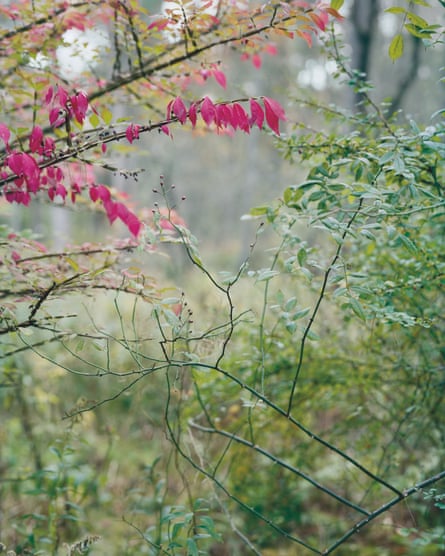
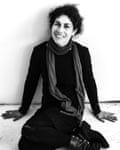
Janelle Lynch, born in 1969 in the US, based in New York
Series: Another Way of Looking at Love, 2015-2018
“This series explores the interconnectedness of all life forms and supports a renewal of human relationships to each other, and to the natural and the spiritual worlds.
For some images, I create points of connection with elements from the same species – Japanese barberry or burdock, for example – while for others, I combine multiple species, such as goldenrod and pokeweed or burning bush and pine trees. Points of connection create spaces, which represent areas where new realities can be envisioned. The depiction of unity, together with colour and light, show the beauty and magic of the natural world.”

Summer Wreath, 2017.
“Another Way of Looking at Love follows the belief that in our organic and spiritual essence, we are inextricably linked to each other and to Mother Nature ... Our wellness and the well-being of the world depend on healthy connections to each other and to the earth.”
Janelle Lynch is an American large-format photographer investigating themes of absence, presence, transcendence and the life cycle through the landscapes and waterways of the US, Mexico and Spain.
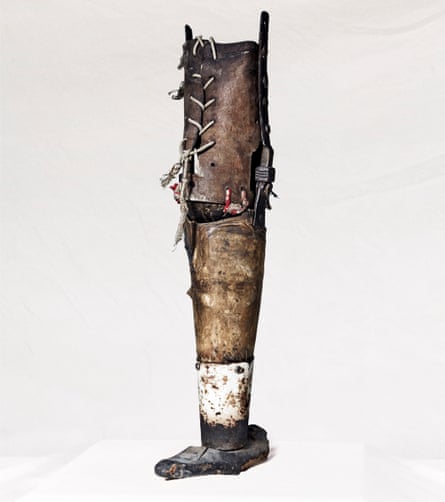
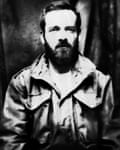
Ross McDonnell, born 1979 in Ireland, based in New York
Series: Limbs, 2012
Limbs shows a set of improvised prosthetic legs that the artist captured at the International Committee of the Red Cross orthopedic hospital in Jalalabad, in eastern Afghanistan. Patients who came to receive their new custom fitted limb often would leave their old one behind. They were kept at the hospital and displayed on the wall. One health worker said: “It would be impossible to count the number of people who have lost limbs as a result of conflict in Afghanistan.”
The hospital serves the semi-permanent battle space that has come to define eastern Afghanistan throughout the country’s 40 years of near-continuous conflict. For McDonnell, Limbs served to anthropomorphise the resilience and optimism of the Afghan people he spent years documenting.

Jalalabad, Nangarhar. Limbs.
Ross McDonnell is a film-maker and photographer from Dublin, Ireland. McDonnell’s work in long-term documentary projects focuses on themes of sustainability, conflict, migration and ecology.
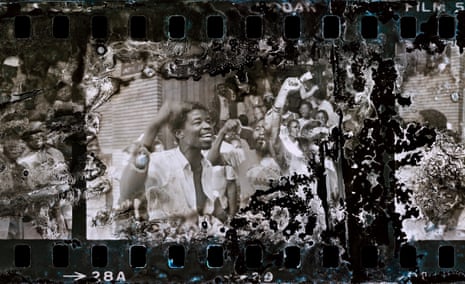

Gideon Mendel, born 1959 in South Africa, based in London
Series: Damage: A Testament of Faded Memory, 2016
“These images emerge from a time of hope, activism and tragedy. In the 1980s, I was part of a young generation of ‘struggle photographers’ in South Africa, documenting the fight against apartheid. In 1990 I left a box of my outtakes (negatives and transparencies) in storage in Johannesburg, and forgot about it. A few years ago, they were returned to me and I discovered that, in their many years of neglect, the box had been rained on, and the top layers had been affected by moisture and mould.”
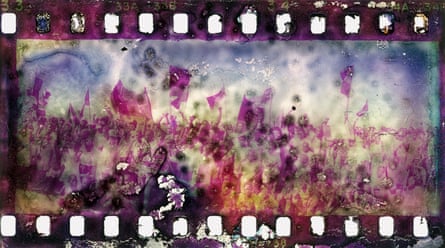
“Hope and tragedy seem so closely intertwined in my recollections of this period. It was a moment where the hegemony and power of the apartheid state seemed insurmountable in all its brutality, yet in response there was such heroic idealism within the township mobilisation that I witnessed.”
Gideon Mendel began photographing in the 1980s, during the final years of apartheid. It was his work during this period that first brought his photographs to global attention.
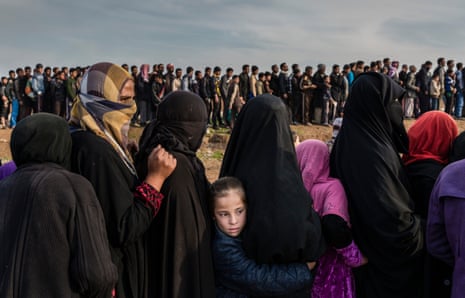

Ivor Prickett, born 1983 in Ireland, based in Europe and the Middle East
Series: End of the Caliphate, 2016-2018
“This selection of images is not an all-encompassing view of war, but rather a beacon of strength in the midst of terrible hardship. They can give us hope despite the challenges we face as a global community.
Nadhira sat in a plastic chair 15 feet (4.5 metres) from where an excavator was digging through the ruins of her home in Mosul’s Old City. At times she was engulfed in dust, whipped up as the driver dumped mounds of stone and parts of her house beside her, but she refused to move. Slowly they found the remains of her sister and niece, who had been killed when the house was flattened by an airstrike in the final weeks of a battle to defeat Isis in Mosul in the summer of 2017.”
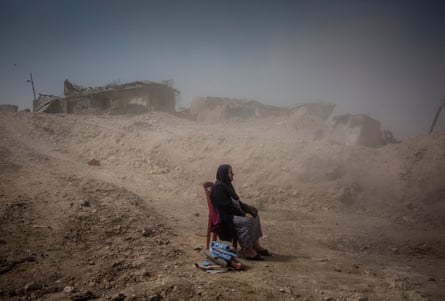
Nadhira Aziz looking on as Iraqi civil defence workers dig out the bodies of her sister and niece from her house in Mosul, where they were killed by an airstrike in June 2017. Iraq, September 2017.
“The levels of violence and killing I witnessed while doing this work were beyond comprehension. During the two years I spent documenting the battle to defeat Isis and its aftermath in Iraq and Syria, I struggled to see the high cost of the war as anything but disastrous. In Mosul alone, the death toll was estimated to be more than 9,000 and vast tracts of the city were left in ruins. However, I also saw glimmers of hope for humanity amid the rubble-strewn aftermath. Meeting Nadhira was one of those moments.”
Based in the region since 2009, Ivor Prickett documented the Arab Spring uprisings in Egypt and Libya, working simultaneously on editorial assignments and his own long-term projects.

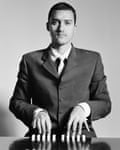
Robin Rhode, born 1976 in South Africa, based in Berlin
Series: Principle of Hope, 2017
“Using the street corner as my studio, the photographic work titled Principle of Hope is photographed against a ruined wall in a township in Johannesburg, … [which] remains a footprint of the segregated Apartheid era. Today, communities there are plagued by high levels of gangsterism, violence, poverty, drug abuse, unemployment, and with HIV Aids on an upward rise because of poor facilities and lack of education. The youths of this area are grappling with identity issues and a lack of self-worth, even after 20 years in a newly democratic post-Apartheid South Africa.”
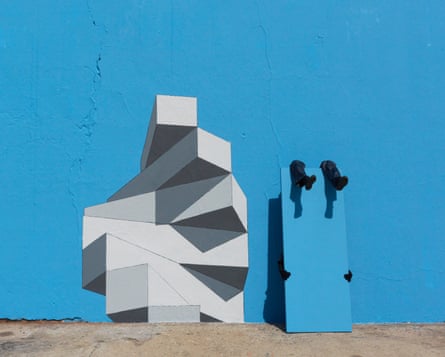
Principle of Hope (Selected still 2), 2017
“These disenfranchised youths have become my studio assistants and collaborators in this unique art-making process. The walls are painted in brightly coloured palettes to trigger psychological perception and to embrace mathematics and geometry as an educative tool to assist in developing reason and logic in the minds of young people.”
The Berlin-based multidisciplinary artist engages in a variety of visual languages such as photography, performance, drawing and sculpture using materials such as soap, charcoal, chalk and paint.
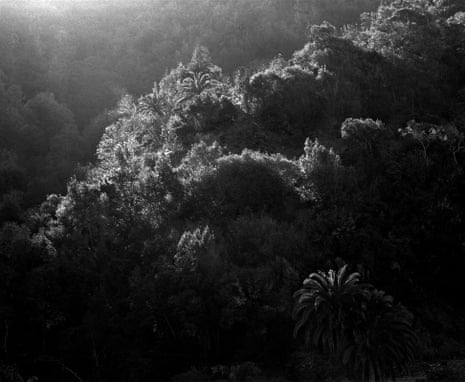
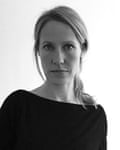
Awoiska van der Molen, born 1972 in the Netherlands, based in Amsterdam
Series: Im schwarzen Himmelsrund, 2010-2018
“When I came across the phrase ‘Im schwarzen Himmelsrund’ in the composer Gustav Mahler’s Das Lied von der Erde, it immediately struck me as the perfect title for a selection of my photo works. Himmelsrund, which literally translates as the heavens’ rim, was used in the middle ages to refer to the celestial firmament as a vaulted disc. This juxtaposition of the divine and the astronomic resonates with my process and my constant quest as a photographer, since my solitary journeys in nature resemble those of the classic pilgrim or anchorite. We share that sense of hope present in alchemist, spiritual and even Christian beliefs, a conviction that there must be a higher plane of existence to which humanity once had access, but with which it lost substantive contact.”

#384-16, 2013.
“Since the start of my artistic practice 16 years ago , my aim has always been to try to get as close as possible to some true, unspoilt core of a place. By peeling off all the many layers of today’s roaring world, I slowly eliminate all distractions in order to hear, see and experience my surroundings with clean senses.”
Awoiska van der Molen is a Dutch artist working with the medium of photography.

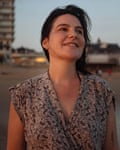
Alexia Webster, born 1979 in South Africa, based in New York
Series: Street Studios, 2011-2018
“All the years I was growing up, hanging in the hallway of my childhood home in South Africa was an old black-and-white photograph of my grandparents, my great uncles and my mother as a toddler, posing in a photographer’s studio. They were recent economic migrants to South Africa from a small village on a little island in Greece. I would stare for hours at the photograph, my grandparents looking young and glamorous, dressed in their finest; at my three-year-old mother, sitting obediently with curls in her hair; at the studio painted backdrop of a misty romantic scene. Although they had just left their whole world behind in search of a better life, to me they looked like elegant characters from a tale my grandmother would tell. This family photograph, of all the images I have, is my most treasured.”
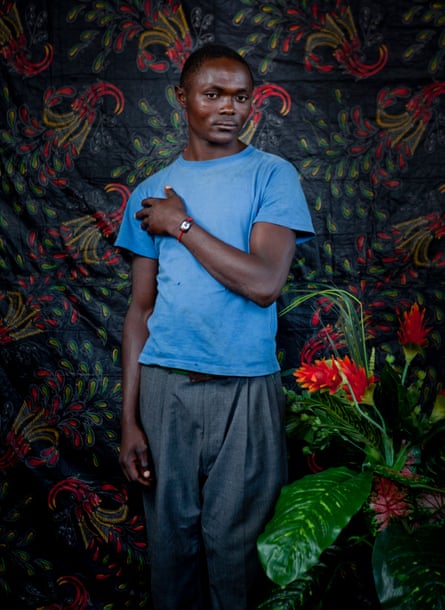
Charle Kahalalo escaped violent attacks in his village in Masisi and has been in living for a year in Bulengo IDP camp in Goma, DRC, 2014.
“First created in March 2011, the Street Studios project is a communal family photo album that began with the set-up of free outdoor photographic studios on more than 20 street corners and public spaces around the world. In each community we visited, we created public photo studio sets and invited any passing families and individuals to pose for a portrait. With thousands of photographs taken over almost an eight-year period, Street Studios is an archive of family and love, an archive that documents not what makes things fall apart but what keeps them together.”
Alexia Webster is a South African photographer and visual artist. Her work explores ideas of intimacy, family and identity across the African continent and beyond.
